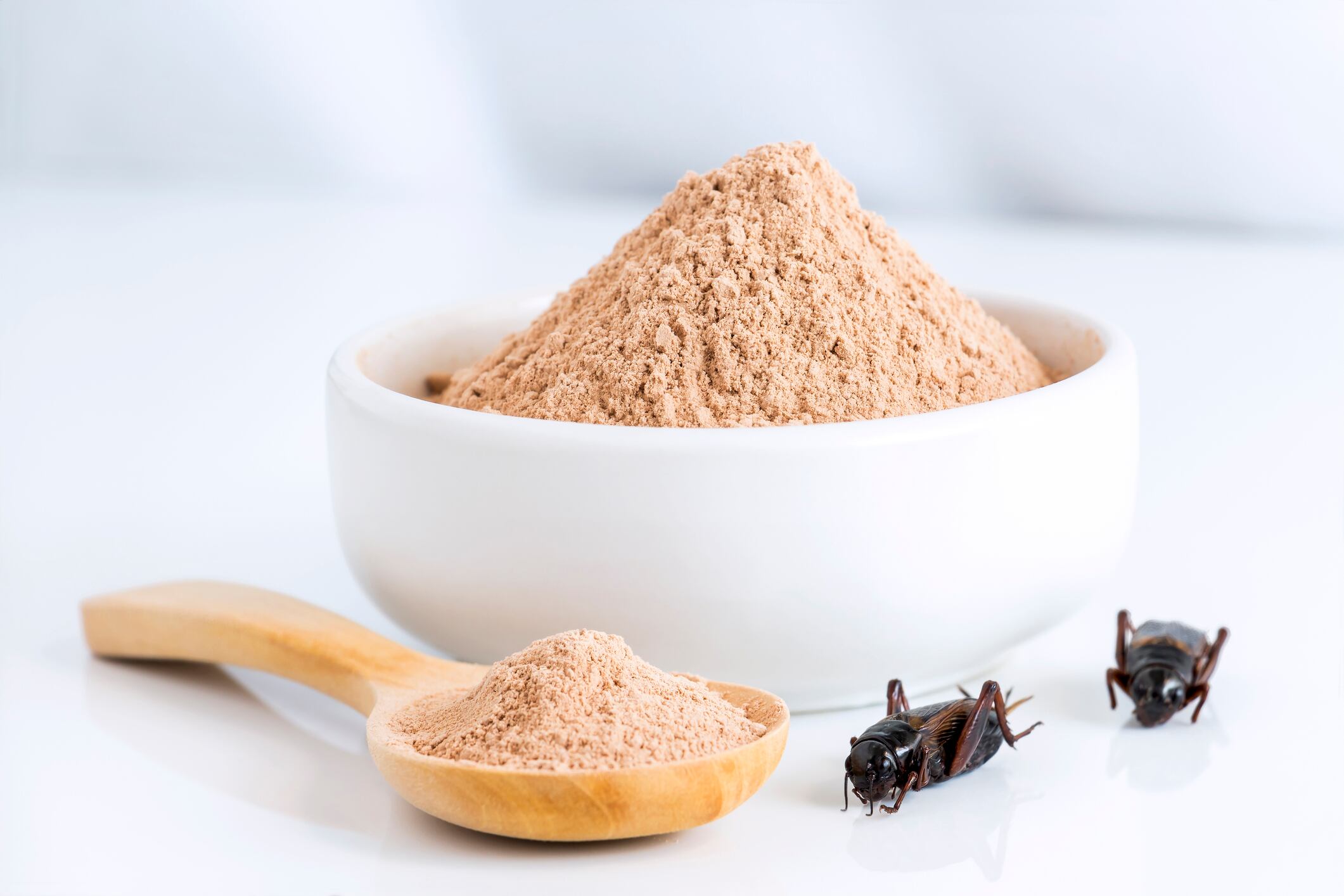For several years now, crickets have been proposed as a novel source of nutrients in human nutrition since they possess bioactive molecules, including high protein content, lipids, chitin, vitamins and minerals.
In a new Italian study, published in 'Antioxidants', the nutritional and functional properties of a novel spray-dried (SD) cricket powder were evaluated. The powder was characterised by physico–chemical properties (morphology, size distribution, solid state, thermal profiles, and surface zeta potential), and antioxidant properties. Moreover, preclinical properties (cytocompatibility and pro-inflammatory immune response) were assessed.
The resulting data leads the authors to suggest that SD crickets represent an interesting material for medical food with an envisaged future application in tissue engineering thanks to their "outstanding antioxidant and anti-inflammatory activity".
Results
The dimensional analysis suggests a narrow size distribution with a mean diameter of 22 µm that should enhance palatability.The solid state characterisation highlights the presence of lipids, proteins and chitin. The amount of chitin was also evaluated, since it is a bioactive polysaccharide with antioxidant and antimicrobial activities.
The powder was found to have an average chitin content of 32.80 ± 7.32 g/kg which the researchers say could contribute to protection against inflammatory and neurodegenerative diseases.
The in vitro protein digestibility study revealed that the SD cricket powder had a PDCAAS value of 1, indicating it is a protein source that could provide all the amino acids needed by humans for optimal nutrition. This could be related to the fine particle size that favours bioavailability.
Moreover, the antioxidant assays revealed an increase in both radical scavenging activity and ferrous ions chelating (bonding) activity, suggesting that the powder possesses antioxidant activity.
"This particular aspect could prove of great interest to the medical field, since free radicals generated by altered metabolic processes could cause significant injuries, and lead to a number of diseases including cancer, inflammation, and neurological conditions." the review states.
What's more, the SD crickets show no toxic effect on cellular viability towards both Caco-2 cells and monocytes-derived macrophages."In conclusion, the investigations into SD crickets underline their potential nutritional value since they may be considered equivalent to milk protein, eggs, and cows’ milk, all highly nourishing foods.
"Moreover, the antioxidant properties, biocompatibility, thermal stability, and anti-inflammatory properties support the potential use of SD crickets in the food industry by providing health benefits in addition to their basic nutritional value.
"These results are confirmed using different batches, showing a low variability of the SD crickets’ properties from one batch to another. The consistency of the batches and their properties prove that SD crickets represent an interesting material and future application could be envisaged, such as their use in tissue engineering for their outstanding antioxidant and anti-inflammatory activity."
Novel Foods status in the EU
In Europe, the marketing of insects as food is ruled by the “Novel Foods” legislation—Regulation (EU) No 2015/2283, that applies to all categories of foods that “were not used for human consumption to a significant degree” within the European Union before 15 May 1997, which is the case for insects. Presently (Q3 2022), four Novel Food authorizations have entered into force for edible insects, and the EFSA (European Food Security Authority) has published a sixth opinion on edible insects, highlighting that food safety and quality are strictly related to the species and production process.
Crickets are highly nourishing and rich in high-quality proteins, providing an excellent source of recommended essential amino acids, with the possible exception of methionine/cysteine. They are also a good source of riboflavin, folic acid, vitamin B12, tocopherols, and several minerals.
Moreover, insects have proved to be beneficial for human health because of the presence of bioactive molecules acting as anti-inflammatory, cardioprotective, antimicrobial, antimycotic and antioxidant compounds. In particular, chitin, a bioactive polysaccharide from insect exoskeleton, is characterized by remarkable antioxidant and antimicrobial activities. These could offer a wide range of applications in many sectors, helping protect the population from diseases such as cancer, neurodegenerative and inflammatory diseases.
Nutritional benefits of spray dried powder
The more common manufacturing method involves grinding whole crickets to a paste, followed by drying in an oven, in order to obtain a “cricket cake”, and finally undertaking particle size reduction in an industrial food processor to obtain a flour. The major issue with the final product obtained through this method is that the particle size often exceeds 300 µm, since the cricket exoskeleton made of chitin resists grinding and remains mostly intact.
This is not a problem in the products in which these particle sizes are acceptable, such as bars or some baked goods. However, it could greatly reduce sensory acceptance in other products (such as beverages or puddings), since particles over 100 µm could seem unpleasant to the human tongue and oral palate.
To overcome this problem, other processes have been set up to produce a finer cricket powder by wet-blending the cricket mass, and then spray-drying it. This process results in a spray-dried (SD) cricket powder different in colour, flavour, and textural properties from “cricket cakes”.
In fact, spray-drying is a simple, easily-scalable, and versatile technique which allows microparticles with a size distribution of anything from several μm to several hundred μm to be obtained, resulting in a more pleasant product for the human palate. Moreover, the process can be completed in shorter time periods, allowing the taste to be preserved intact.
For the current study, SD crickets were donated by Alia Insect Farm. The insects were pasteurized, and then minced and milled to obtain a homogeneous blend. This was spray dried at 200 °C (inlet temperature), producing a fine powder with a residual humidity below 5%. Ten batches were prepared and 50 g samplings from each were studied.
Source: Antioxidants
https://doi.org/10.3390/antiox12010112
"Nutritional and Functional Properties of Novel Italian Spray-Dried Cricket Powder"
Ruggeri, M.; Bianchi, E.; Vigani, B.; Sánchez-Espejo, R.; Spano, M.; Totaro Fila, C.; Mannina, L.; Viseras, C.; Rossi, S.; Sandri, G.


